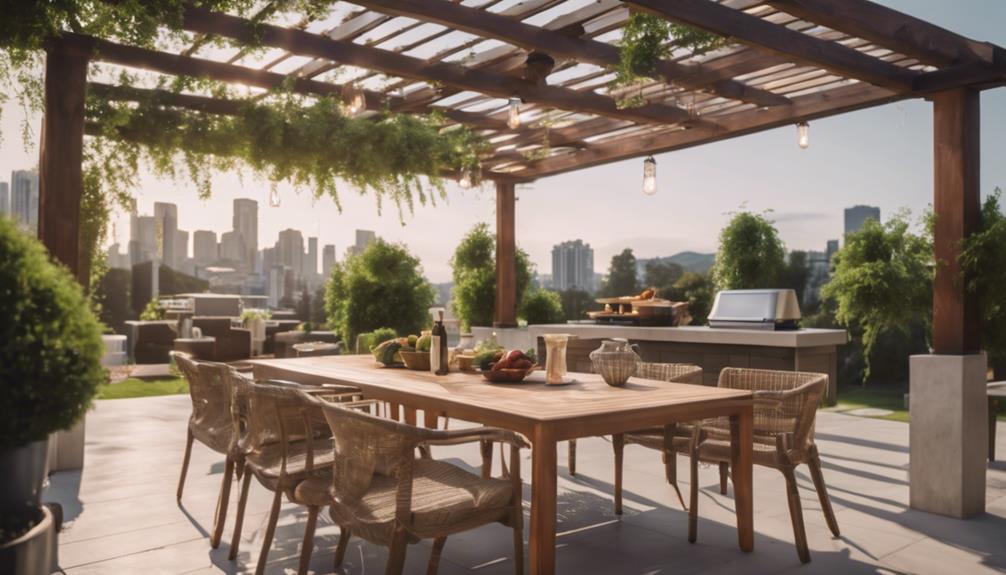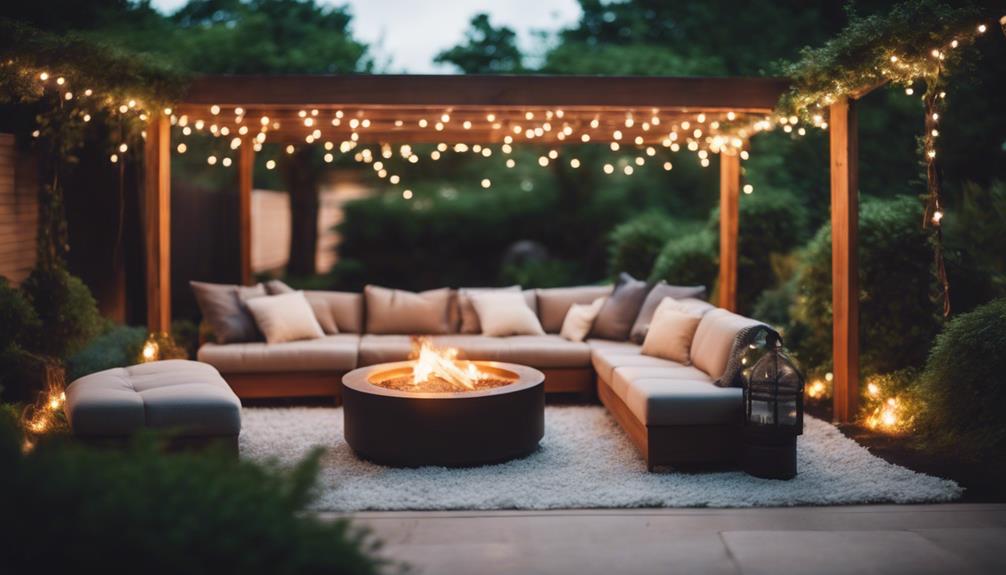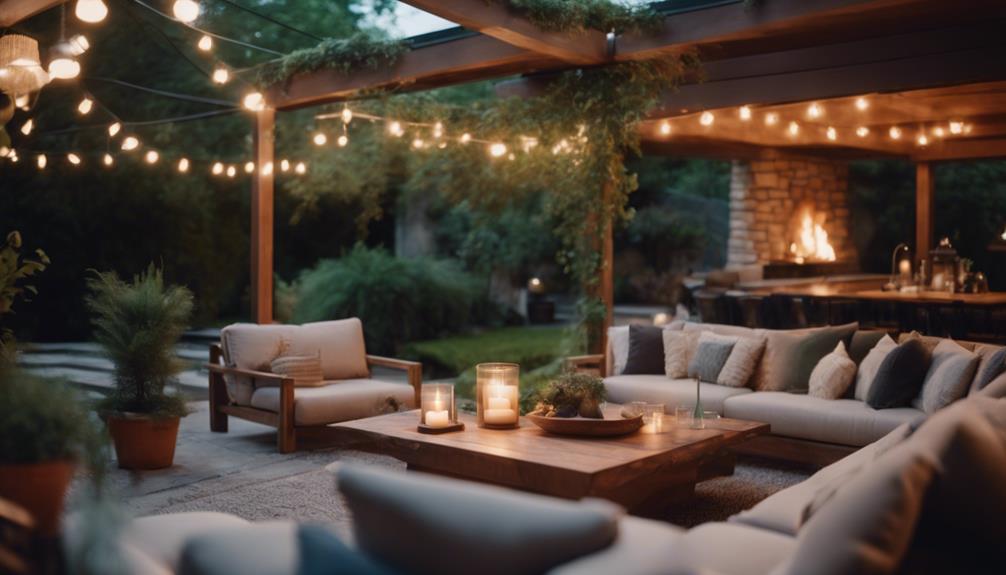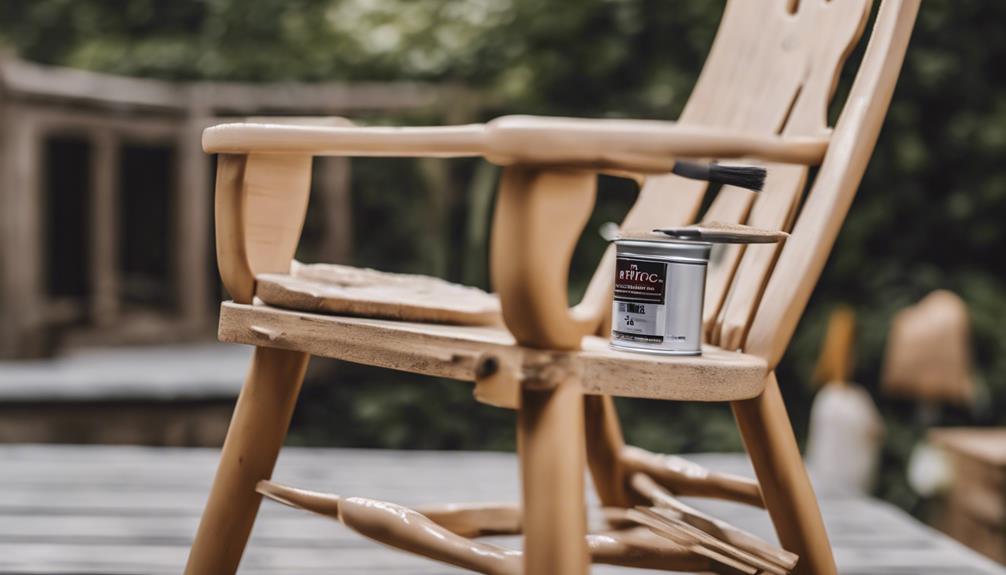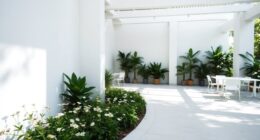You can certainly use Al Fresco Paint on walls for a durable matte finish that is water-based, UV-resistant, and easy to apply, suitable for both indoor and outdoor surfaces. Al Fresco is engineered to adhere well to various surfaces like wood, metal, and plastic, offering a long-lasting, weatherproof coating. With colors ranging from vintage to shabby chic, you can personalize your space by layering different shades for a unique outcome. To maintain beautiful walls, gentle cleaning with mild soap is recommended, avoiding harsh chemicals. For best results, follow application instructions carefully and store any leftover paint properly.
Key Takeaways
- Al Fresco paint is suitable for indoor walls, offering a matte finish and weatherproof coating.
- It adheres well to various surfaces like wood, metal, and composite front doors.
- Provides excellent coverage and durability, with UV resistance for long-lasting results.
- Eco-friendly and UKCA compliant, ensuring safety and versatility for interior and exterior projects.
- Follow proper application instructions for best results, including surface preparation and drying times.
Benefits of Al Fresco Paint
Discover the numerous benefits of using Al Fresco Paint for your wall painting projects. This specialized paint offers a matte finish that brings a vintage touch to your walls, perfect for achieving a shabby chic or distressed appearance.
Being water-based, Al Fresco Paint isn't only durable and UV-resistant but also provides excellent coverage while self-sealing for added protection. Its eco-friendly composition makes it a responsible choice, with minimal VOC content and UKCA compliance ensuring safety and versatility for both interior and exterior applications.
Suitable Surfaces for Al Fresco
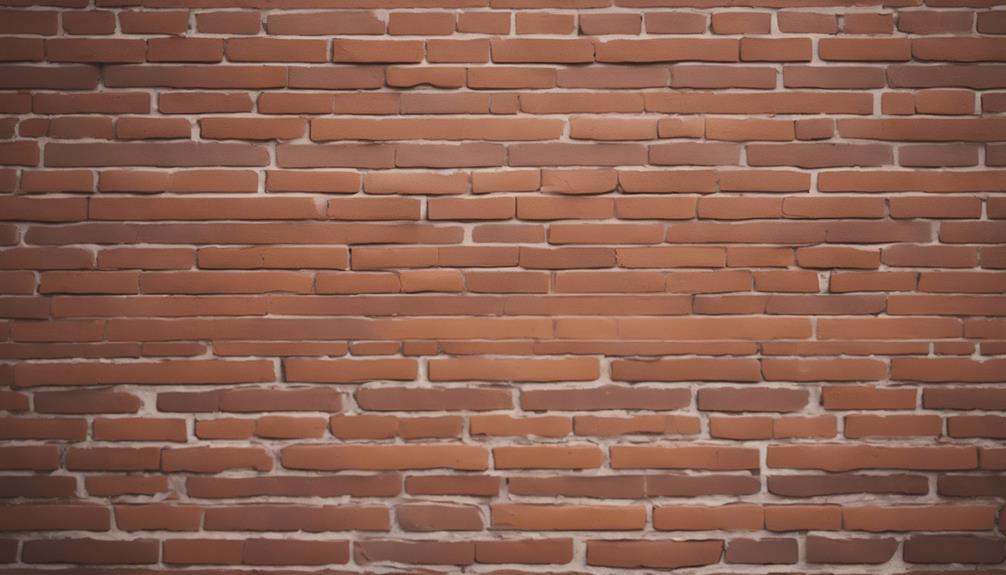
Al Fresco paint is compatible with various surfaces, including walls, providing a versatile option for your painting projects.
Its formulation is specifically engineered for outdoor use, ensuring durability and weather resistance when applied to exterior walls.
Wall Compatibility
For best results with Alfresco paint, make sure that you apply it to surfaces that are compatible with its formulation. When it comes to walls, especially interior walls, Al Fresco paint offers a unique matte finish that adds a vintage touch to your living space.
Being water-based, self-levelling, self-priming, and self-sealing, this paint guarantees excellent coverage and a smooth final look on your walls.
Al Fresco paint is designed to adhere well to various surfaces, including wood, metal, plastic, and composite front doors. Its durable and weatherproof nature, along with UV resistance, makes it suitable for both indoor and outdoor projects.
With a wide range of colors available, you can explore your creativity when designing your interior walls. So, whether you're aiming for a classic, sophisticated look or a vibrant, modern aesthetic, Al Fresco paint provides the versatility and quality you need for your wall painting endeavors.
Exterior Application Benefits
To guarantee successful outdoor application with Al Fresco paint, it's important to identify the suitable surfaces that can benefit from its UV-resistant and weatherproof properties. Here are three key surfaces where Al Fresco paint can be effectively used for exterior applications:
- Wood: Al Fresco paint is an excellent choice for wooden surfaces such as outdoor furniture and decking, providing protection against the sun's UV rays and harsh weather conditions.
- Metal: Ideal for metal surfaces like fences, railings, and garden ornaments, Al Fresco paint offers a durable and rust-resistant finish that withstands outdoor elements.
- Plastic: Al Fresco paint can be applied to plastic surfaces like front doors, PVC, uPVC, and composite doors, giving them a long-lasting and weather-resistant coating for enhanced durability in outdoor settings.
Application Tips for Walls
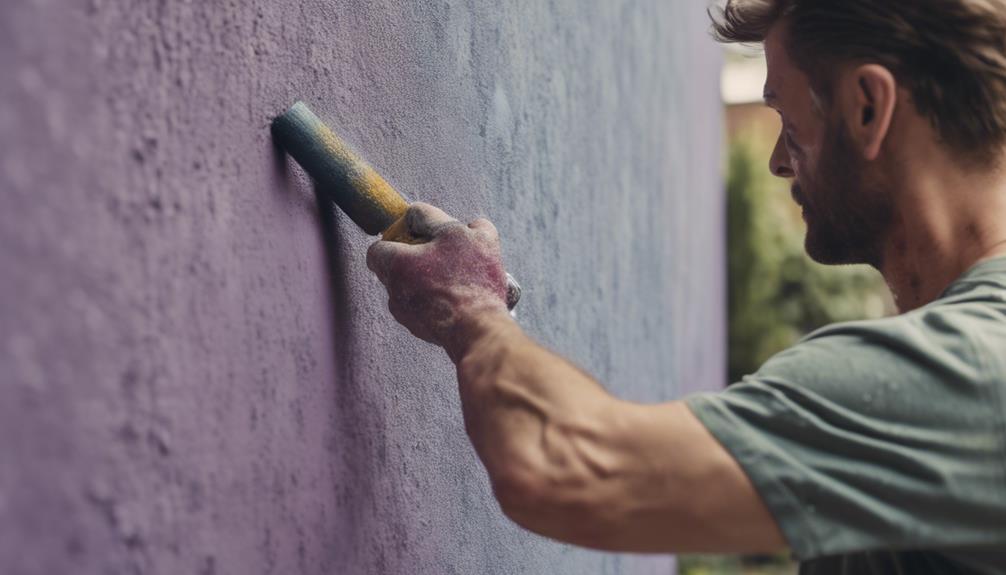
Enhancing the finish of walls with Al Fresco paint involves applying it strategically for a professional look. When painting walls with Al Fresco paint, keep in mind the goal for a vintage finish or a matte appearance.
This type of paint is perfect for achieving a shabby chic or distressed look on your interior walls. To guarantee an efficient application, allow each coat to dry quickly before applying the next one. Consider sanding between coats for a smoother finish on your painted walls.
For a more customized and creative outcome, experiment with layering different colors of Al Fresco paint. By following these application tips, you can transform your walls into unique, textured surfaces that exude charm and character.
Color Options for Walls

Consider exploring the wide range of colors available in the Al Fresco paint collection for your walls. Frenchic's Al Fresco Range offers an array of options to elevate your space with a weatherproof and matte finish.
Here are three enticing choices to inspire your wall transformation:
- Vintage Hues: Opt for classic colors like antique white, duck egg blue, or French linen to achieve a timeless and elegant look in your living room or bedroom.
- Shabby Chic Palette: Embrace the charm of pastel tones such as blush pink, sage green, or lavender mist for a whimsical and romantic feel in your nursery or study.
- Distressed Finishes: Experiment with industrial shades like graphite, steel blue, or urban grey to add depth and character to your kitchen or home office, giving a modern twist to the distressed aesthetic.
Bring a touch of personality to your walls with Al Fresco paint, creating a stunning backdrop that reflects your unique style and taste.
Durability of Al Fresco on Walls
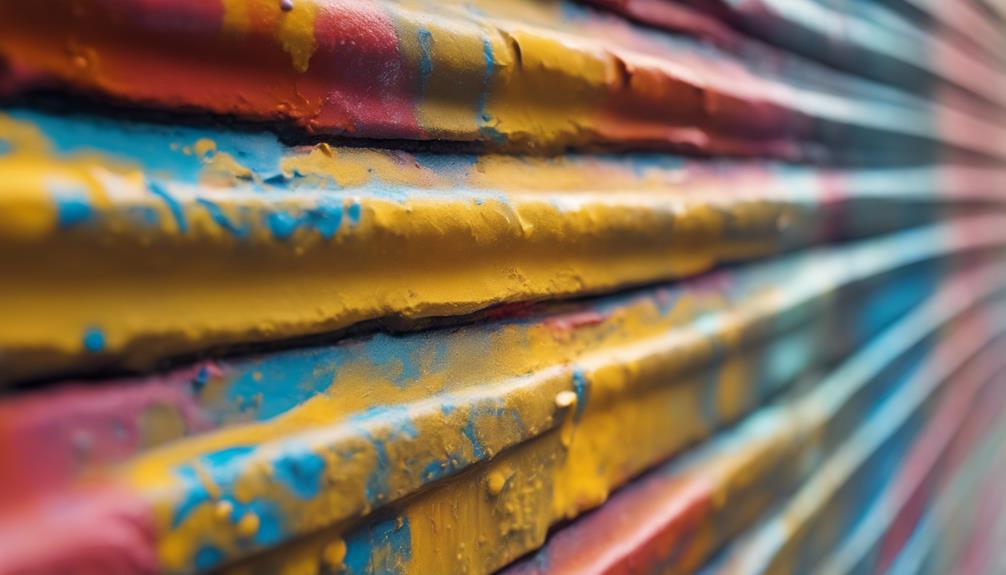
For a durable and long-lasting finish on your walls, consider using Al Fresco paint. This specialized paint offers a smooth and chalky matte finish that's perfect for interior walls. Al Fresco paint is designed to be UV-resistant and weatherproof, making it an excellent choice for indoor applications where durability is key. Additionally, this paint is self-sealing, ensuring a secure bond to the wall surface and providing enhanced longevity.
The unique properties of Al Fresco paint make it ideal for creating a stylish and long-lasting look for your interior walls. By choosing Al Fresco paint, you can enjoy a finish that not only looks great but also stands the test of time.
With proper application and maintenance, Al Fresco paint can transform your walls with its durable and high-quality finish.
Maintenance and Cleaning Guide
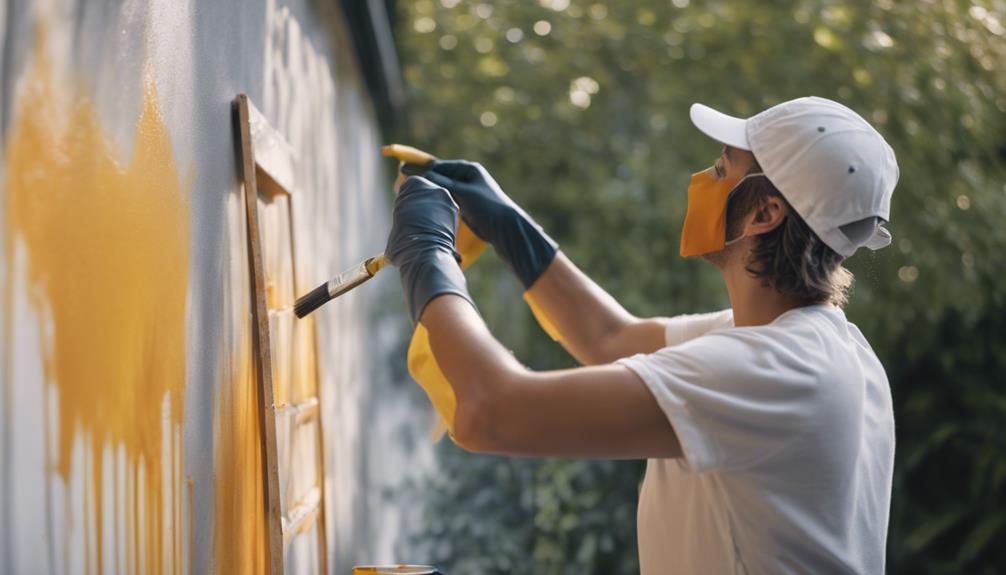
When it comes to maintaining walls painted with Al Fresco paint, remember to use gentle cleaning techniques with mild soap and water to keep dirt at bay.
Avoid harsh chemicals to maintain the finish, and promptly touch up any chipped areas for a flawless look.
Following these preventive maintenance steps will make sure your Al Fresco painted walls stay beautiful and long-lasting.
Cleaning Techniques
Regularly clean your walls painted with Frenchic Al Fresco paint using a mild soap and water solution to maintain them gently.
Here are three essential tips for keeping your walls pristine:
- Use a gentle touch: When cleaning, opt for a mild soap and water solution to avoid damaging the painted surface. Harsh chemicals can strip the paint over time, so stick to a soft approach.
- Handle chipped areas promptly: If you notice any chipped areas on the walls, make sure to touch them up promptly. This maintains the integrity of the paint finish and prevents further damage.
- Preserve leftover paint: Store any unused paint in a cool, dry place. This helps preserve its quality for future touch-ups or projects, ensuring consistency in color and texture.
Recommended Products
To effectively maintain and clean walls painted with Frenchic Al Fresco paint, consider incorporating recommended products into your routine. Frenchic Al Fresco paint, known for its versatility in outdoor applications, can also be used indoors to achieve a unique matte finish on interior walls.
This paint offers the convenience of being self-levelling, self-priming, and self-sealing, simplifying the application process. Being water-based, durable, and UV resistant, Frenchic Al Fresco paint guarantees a long-lasting and smooth chalky finish on your walls.
When it comes to cleaning, a gentle solution of mild soap and water is all that's needed to keep the painted walls looking fresh. With minimal VOC content and excellent coverage, Al Fresco paint stands out as a reliable choice for both interior and exterior wall projects, providing a hassle-free maintenance experience for a pristine appearance.
Preventive Maintenance
For maintaining the exquisite appearance of your walls painted with Frenchic Al Fresco paint, it's important to follow a preventive maintenance routine that includes gentle cleaning and timely touch-ups.
To guarantee your walls remain in top condition, follow these maintenance guidelines:
- Regular Cleaning: Clean your Al Fresco-painted walls regularly with mild soap and water to remove any dirt or grime without damaging the paint finish.
- Avoid Harsh Chemicals: Refrain from using harsh chemicals or abrasive cleaners, as they can harm the paint finish and compromise the integrity of the walls.
- Prompt Touch-Ups: Whenever you notice chipped areas on the walls, make sure to promptly touch them up to prevent further deterioration and maintain the overall appearance of the paint.
Frequently Asked Questions

Explore some common questions about using Al Fresco paint on walls.
Can Al Fresco paint intended for outdoor use be used on indoor walls? Yes, it can. This versatile paint not only provides a matte finish for indoor walls but also offers a durable and weatherproof coating suitable for various surfaces like woodwork and wall tiles.
Is Al Fresco paint water-based and self-levelling? Absolutely, this paint is water-based, self-levelling, and self-priming, making it user-friendly and efficient for different applications.
How does Al Fresco paint protect against UV rays? Al Fresco paint is UV-resistant, ensuring long-lasting color retention and protection against sun damage.
What should you keep in mind when applying Al Fresco paint on walls? Following the application instructions provided on the tin is essential for achieving the best results and ensuring a lasting finish.
Trust in Al Fresco paint for a reliable, eco-friendly, and compliant option for your wall painting needs.
Frequently Asked Questions
Can You Use Alfresco Paint on Walls?
You can absolutely use Al Fresco paint on walls for a unique and vintage look. It provides a matte finish and works well on various surfaces like wood and metal, giving your space a shabby chic charm.
What Can Frenchic Paint Be Used On?
Wondering what Frenchic paint can do? It's a versatile gem! Use it on walls, furniture, and more for a vintage touch. With a smooth finish, durability, and weatherproof features, Frenchic Al Fresco is your all-in-one solution.
What's so Good About Frenchic Paint?
Frenchic Paint offers versatility with water-based formulas, low odors, and eco-friendly options. The Al Fresco Range provides UV resistance for outdoor projects. Indoors, combine Al Fresco for a matte finish on cabinets and furniture, allowing for creative interior design.
Does Frenchic Paint Need Sealing?
You won't need to fuss with sealing Frenchic Al Fresco paint; it's like a sturdy shield standing guard on your walls. Just apply following the tin's instructions, and voilà—no more worries about sealing!
Conclusion
To sum up, using Al Fresco paint on walls can breathe new life and vibrancy into any space. Its durability and wide range of color options make it a versatile choice for both interior and exterior applications.
By following proper application techniques and maintenance guidelines, you can enjoy the benefits of Al Fresco paint for years to come.
So, why not add a splash of color and style to your walls with Al Fresco paint today?



